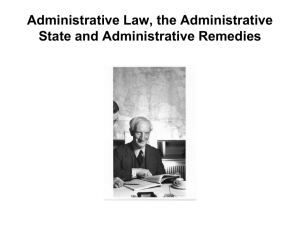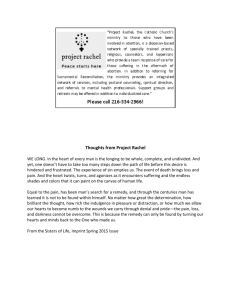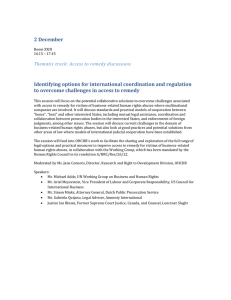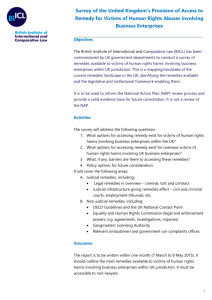Right to an Effective Remedy: Normative Framework under International Law
advertisement
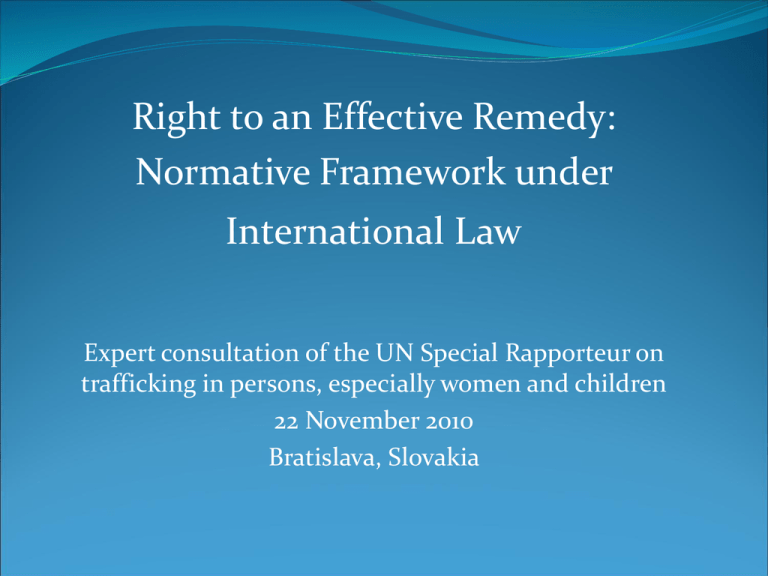
Right to an Effective Remedy: Normative Framework under International Law Expert consultation of the UN Special Rapporteur on trafficking in persons, especially women and children 22 November 2010 Bratislava, Slovakia International Human Rights Treaties UDHR: Art 2: Principle of non-discrimination Art 6: The right to recognition as a person before the law Art 7: The right to equal protection Art 8: The right to an effective remedy “Everyone has the right to effective remedy by the competent national tribunals for acts violating the fundamental rights granted him by the constitution or by the law.” International Human Rights Treaties This principle of equality and non- discrimination as well as the right to an effective remedy enunciated in the UDHR has been reinforced and expanded by several and subsequent binding treaties namely: International Covenant on Civil and Political Rights (ICCPR: 1966). International Human Rights Treaties ICCPR: Art 2(3): The right to an effective remedy States are obliged to ensure: Victims of human rights violations have an effective remedy; Victims have the right to have their claims determined by competent judicial, administrative or legislative authorities, or any other competent authority; The competent authorities enforce such remedies. International Human Rights Treaties ICCPR: Art 14(1): Equality before the law “All persons shall be equal before the courts and tribunals. In the determination of any criminal charge against him, or of his rights and obligations in a suit at law, everyone shall be entitled to a fair and public hearing by a competent, independent and impartial tribunal established by law”. International Human Rights Treaties CAT: Art 14(1): The right to “redress” and to “an enforceable right to fair and adequate compensation, including the means for as full rehabilitation as possible”. CRC: Art 39: States obliged to “promote physical and psychological recovery and social reintegration of a child victim of: any form of neglect, exploitation, or abuse; torture or any other form of cruel, inhuman or degrading treatment or punishment; or armed conflicts”. International Human Rights Treaties CERD: Art 6: States obliged to ensure “effective protection and remedies, through the competent national tribunals and other State institutions”, as well as “the right to seek from such tribunals just and adequate reparation or satisfaction for any damage suffered” as a result of racial discrimination. CEDAW: While no specific references: Art 2: Equality of men and women States obliged to “…ensure through competent national tribunals and other public institutions the effective protection of women against any act of discrimination”. Soft law instruments UN Declaration of Basic Principles of Justice for Victims of Crime and Abuse of Power 1985: Focuses on victims of domestic crimes committed by individuals Affirms the rights to: access to justice and fair treatment; restitution; compensation; necessary material, medical, psychological and social assistance Soft law instruments Basic Principles and Guideline on the Right to a Remedy and Reparation for Victims of Gross Violations of International Human Rights Law 2005 Affirms the victim’s rights to: Equal and effective access to justice Adequate, effective and prompt reparation for harm suffered Access to relevant information concerning violations and reparation mechanisms. Soft law instruments The Basic Principles and Guidelines elaborate the content of “reparation”: Restitution – eg. restoration of liberty, enjoyment of human rights, identity, family life and citizenship, return to one’s place of residence. Compensation for any economically assessable damage Rehabilitation – Medical, psychological, legal and social services Satisfaction – eg. Cessation of violations, judicial and administrative sanctions against perpetrators. Guarantees of non-repetition – eg. Investigation, prosecution and sanctioning of perpetrators, human rights education The Right to an Effective Remedy International human rights law clearly recognizes: Substantive rights to remedies Adequate reparations, such as restitution, rehabilitation, compensation, satisfaction and guarantees of non-repetition Procedural rights of access to remedies – eg: The right to information The right to legal and other assistance necessary to claim remedies
